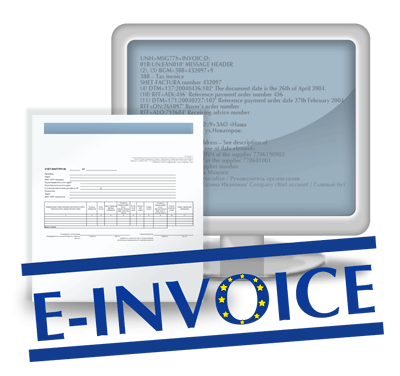Internet and the Single Market – European companies should not have any problem doing business anywhere in the EU crossing the border of their home country. Electronic invoicing can be of immense help for people who sell goods or services across the EU countries. But the acceptance rate of electronic billing and payment solutions has been minimal.
While probing it has been revealed that due to the differences in national standards and requirements for value-added tax (VAT) most SMEs are not able to take advantage of electronic invoicing and payment solutions. Though all the member states decided upon a common VAT standard some of the factors are still prominently different; one such issue is e-signature.
The future of electronic invoicing and payment processes seem quite promising. According to a study done by CAP Gemini, electronic invoicing systems can save around €40 billion in a year or around €238 billion in 6 years in b2b transactions all over the EU, provided the businesses fully digitise their invoicing and payment methods. There are 24 million SMEs in the EU; the public sector can also benefit out of the e-invoicing solutions.
A study was conducted among some of the SMEs who have already implemented electronic invoicing system; they reported that by using e-invoicing they saved time which was equivalent of 1% of their annual turnover. This is definitely an attractive figure; sooner the SMEs and the public sector officials realise this, the better.
The good news is: people have already started realising the benefits of e-invoicing in Europe. Sweden, Spain, Italy, Finland and Denmark, five of the EU Members States, have already implemented electronic invoicing systems for procurements in the public sector. E-invoicing has saved over €100 million in a year only in Denmark. A recent study revealed that more than 50% of the public authorities in Denmark are preparing to implement e-invoicing. More countries are about to follow the trend.
Moreover, the European Commission is considering a proposal to redefine the rules on VAT so that national VAT administrators evaluate electronic and paper invoices equally. Once this is implemented all the problems with e-invoicing and VAT would be removed and all the EU Member States can make full advantage of electronic invoicing and payment systems through the EU.
Modifying E-Invoicing so that it Suits the Bill
The economic reform agenda of the Lisbon Strategy concentrates on different factors to bring in a knowledge-based and competitive economy in the EU; the objective is to create a total business friendly economy across the EU.
E-invoicing has a lot to contribute here; it has got the potential to simplify business transactions. Companies based in the EU Member States can do business with each other in just few mouse clicks once they start using a standardised e-invoicing solution. This would definitely strengthen the Single Market environment in the EU.
The European Commission is working hard to develop the e-invoicing in order to make it more acceptable across the Member States. Once the business requirements, technical challenges and the legal issues are fixed, half the battle will be won. The EU’s Competitiveness and Innovation Programme is going to fund the experimental or pilot projects that intend to explore the various aspects of electronic procurement and electronic invoicing.
Preparing Electronic Invoicing Blueprints
To accelerate the research and development process of e-invoicing, the European Commission created a task force that has already passed its final report in November 2010. This report contains a series of strategic proposals and recommendations that can promote standardisation by eliminating the operational, trust and legal barriers.
In the year of 2008, an independent group of experts from different industrial sectors and from different companies from the Member States was launched. This was done to enhance the development of the standardisation of e-invoicing.
Once the standardised invoicing system is integrated with the Single European Payment Area, non-cash euro payment would be possible throughout the euro area. This would definitely strengthen EU’s Single Market model.












